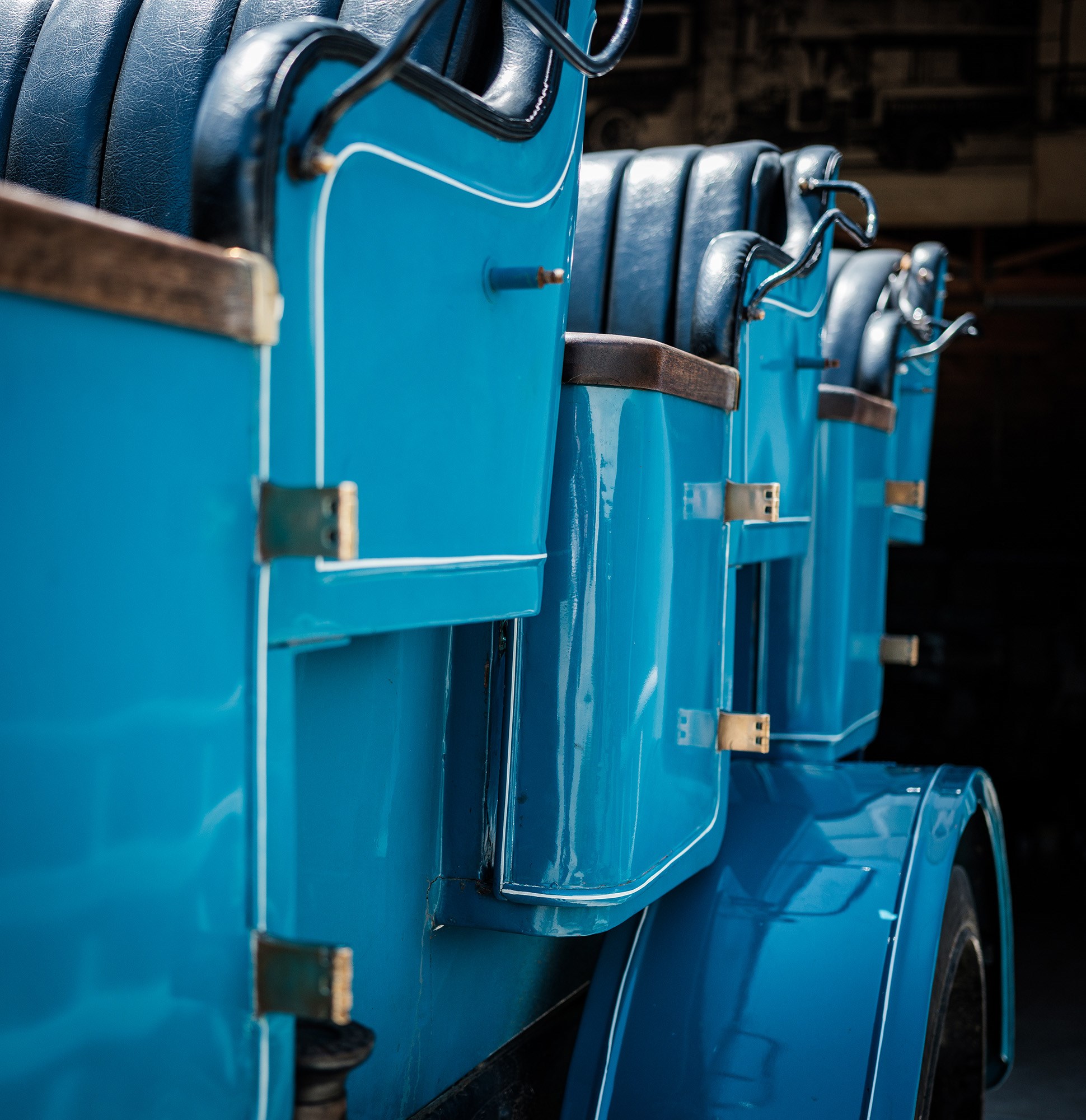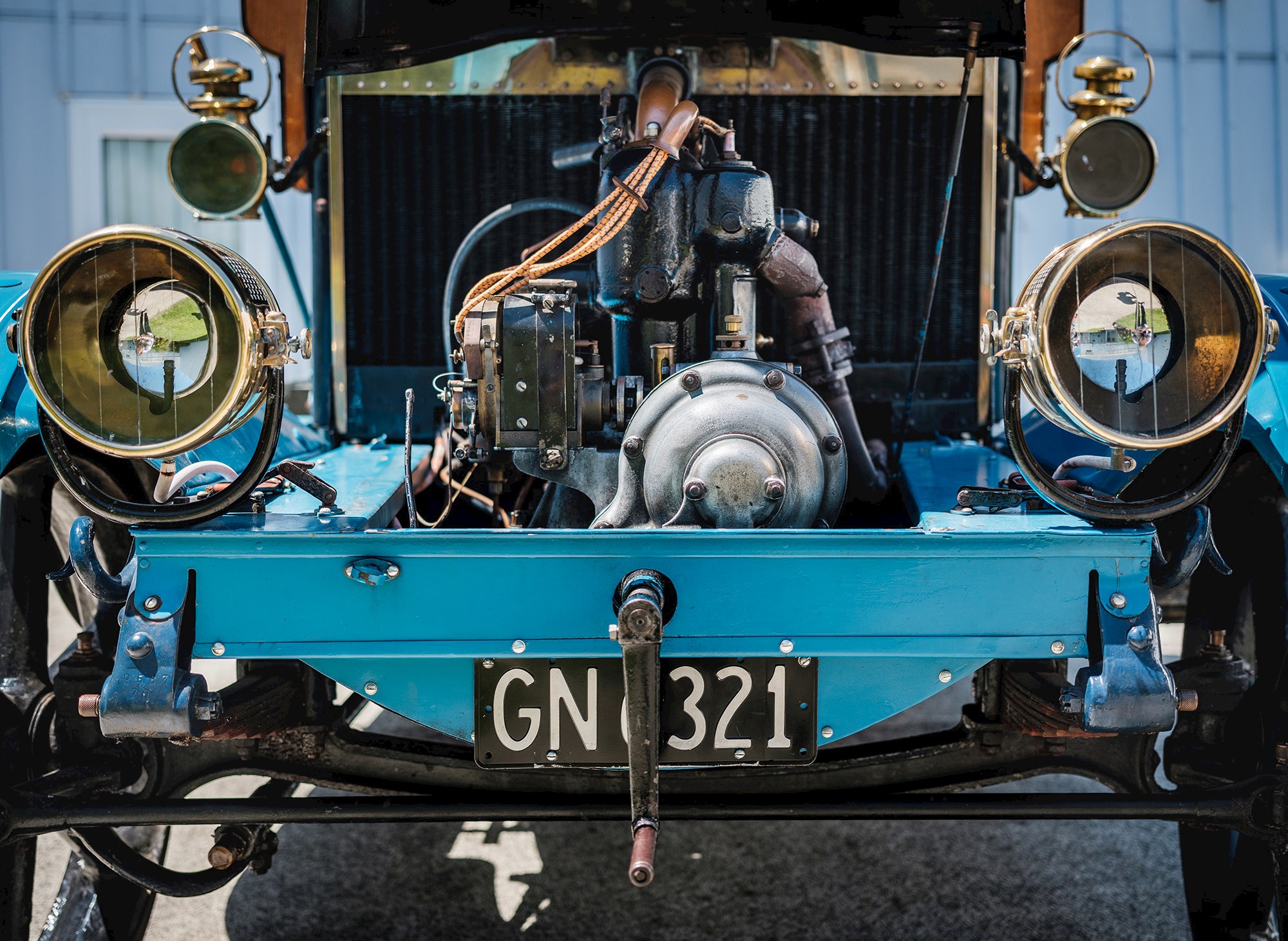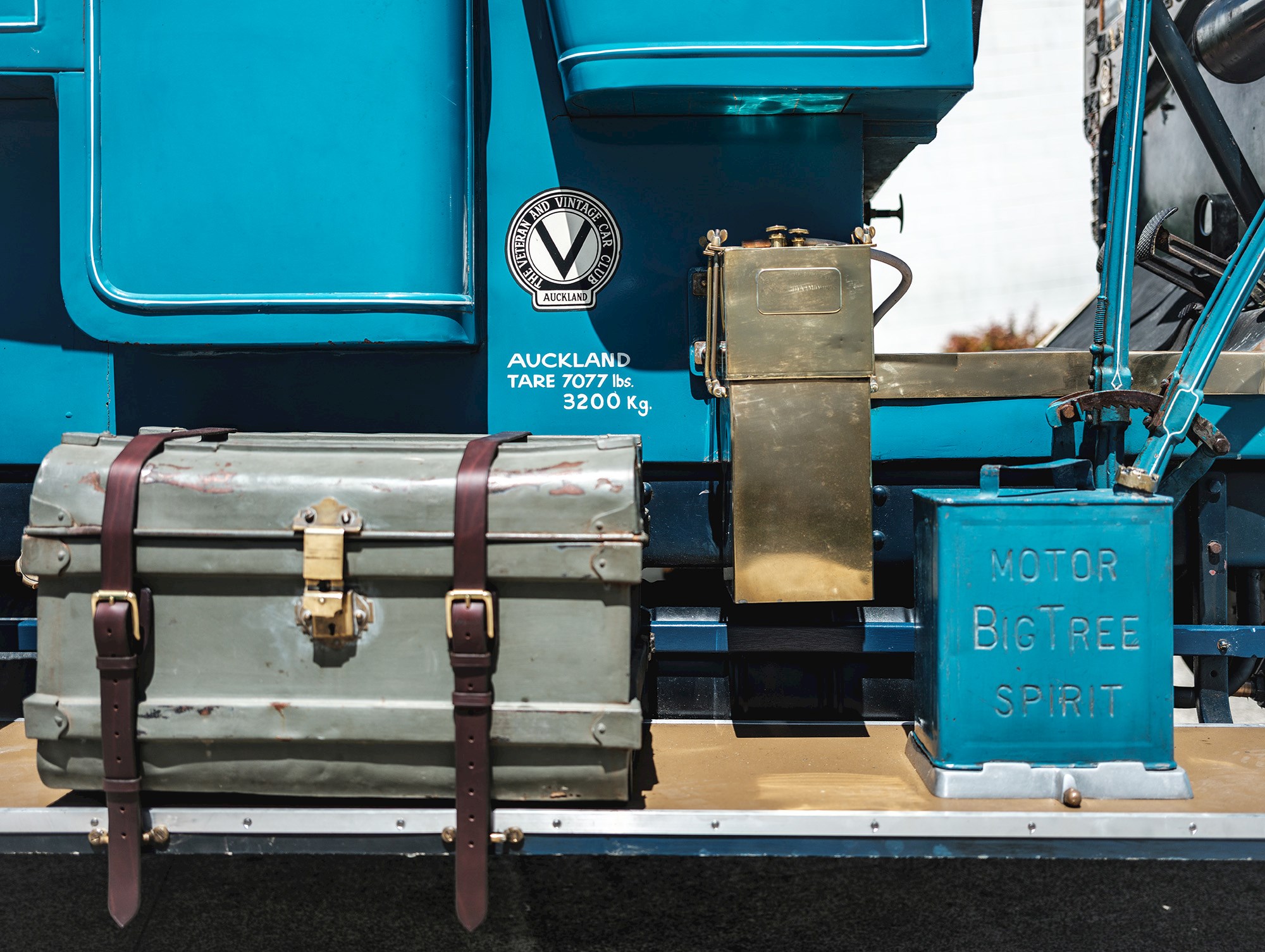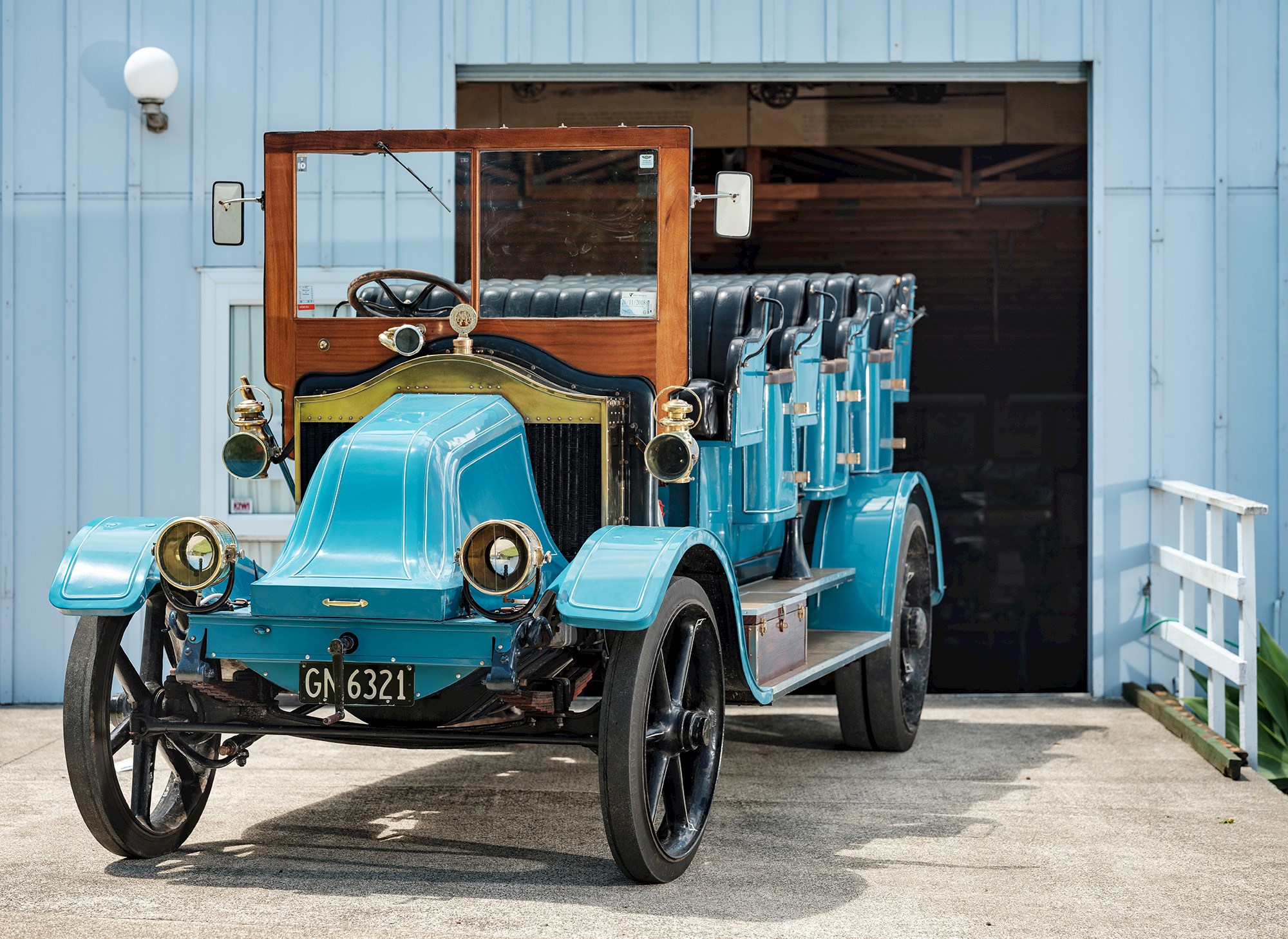Alan Price, committee member and former chairman of the Auckland Veteran & Vintage Car Club drove introduces us to this French Charabanc.
Tell us about the club’s charabanc.
Affectionately named Angelique, it is a blue 1915 Renault Charabanc, built in France. It was discovered as a rotting chassis in a paddock in Karaka in 1964, where it had been for 27 years. The decision was made that she would be much more useful as a club vehicle, so she was restored by a dozen or so members. Restoration took place at Motat and was completed in 1970. Only a few years later, the shed it was kept in at Motat caught fire and the charabanc was extensively damaged. A second restoration began and was completed in 1974.
How many were brought to NZ?
The charabanc is probably one of many similar vehicles brought to New Zealand after World War I as surplus, however now it is the only known survivor of this type in the country. It is likely that it was used as a truck.

How many people does it seat?
12.
Tell us about the paintwork and upholstery.
As much work as possible has been done by Auckland Veteran and Vintage Car Club members, including paint. I made the wooden hood bows for it and a canvas hood was made by a local firm.
Other specs?
It has a four-cylinder water-cooled side valve engine, capacity 3563cc, and 20hp. The non-synchromesh gear box, which is controlled from a lever outside the vehicle, is driven through a cone clutch and has four forward and one reverse gear. The handbrake hand operates on the two back wheels. The charabanc has solid rubber tyres. Lighting is by acetylene gas.

Is it easy to start?
It is crank-started and the petrol has to be primed — hand-pumped from the main petrol tank to an ancillary tank in front of the steering wheel. It then siphons down into the carburettor. Pressure has to be kept up, so hand pumping has to continue all the time it is travelling. Hence a second person is needed alongside the driver to operate the hand pump under the front seat.
How often does it get driven?
For special events such as international rallies, veteran rallies, parades, etc.
Who drives it?
Six people — all club members.
Does it need a lot of maintenance?
The six drivers meet on a Wednesday evening, once a month, to carry out necessary maintenance.

How does the club get hold of parts for this vehicle?
Few spare parts are available so we make what we can.
How far and how long does it tend to be driven?
As it only averages a maximum 20mph [32km/h] we don’t motor it great distances. It was put in a container and taken by ship to Dunedin to the last international rally but, once there, it motored on every rally day.
Who started your interest in cars? And in vintage cars?
I always had an interest in cars. The late Bruce Catchpole from Matamata introduced me to vintage motoring. I maintained his 1928 Stutz for many years and drove it to many rallies.
Can you compare vintage and modern cars?
Modern vehicles are easier to handle with power steering and better brakes etc. Vintage vehicles have to be driven cautiously, remembering that it takes longer to stop and so on, so you have to allow extra distance between yourself and the vehicle in front and be mindful that modern vehicle drivers have a habit of moving into that gap. Every vehicle has a purpose. If I had to get from A to B in a hurry, I would choose a modern vehicle. If time wasn’t an issue, I’d probably choose a vintage.

What car have you most enjoyed driving?
When vintage motoring, I prefer to drive our 1930 Chevrolet Sports Roadster. My wife, Shaaran, and I purchased it three months after we were married in 1967, restored it over three years, and have travelled to many rallies all over New Zealand.
And if you could drive any vintage car in the world, what would it be?
Our 1930 Chevrolet. It is part of the family. In fact, we have had it longer than our children.
And, having looked backward, now we look forward ... electric and driverless cars, how do you feel about them?
There is some future there but still lots of headaches to sort out.













